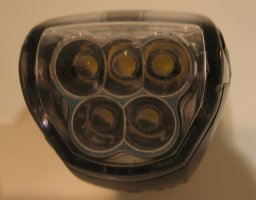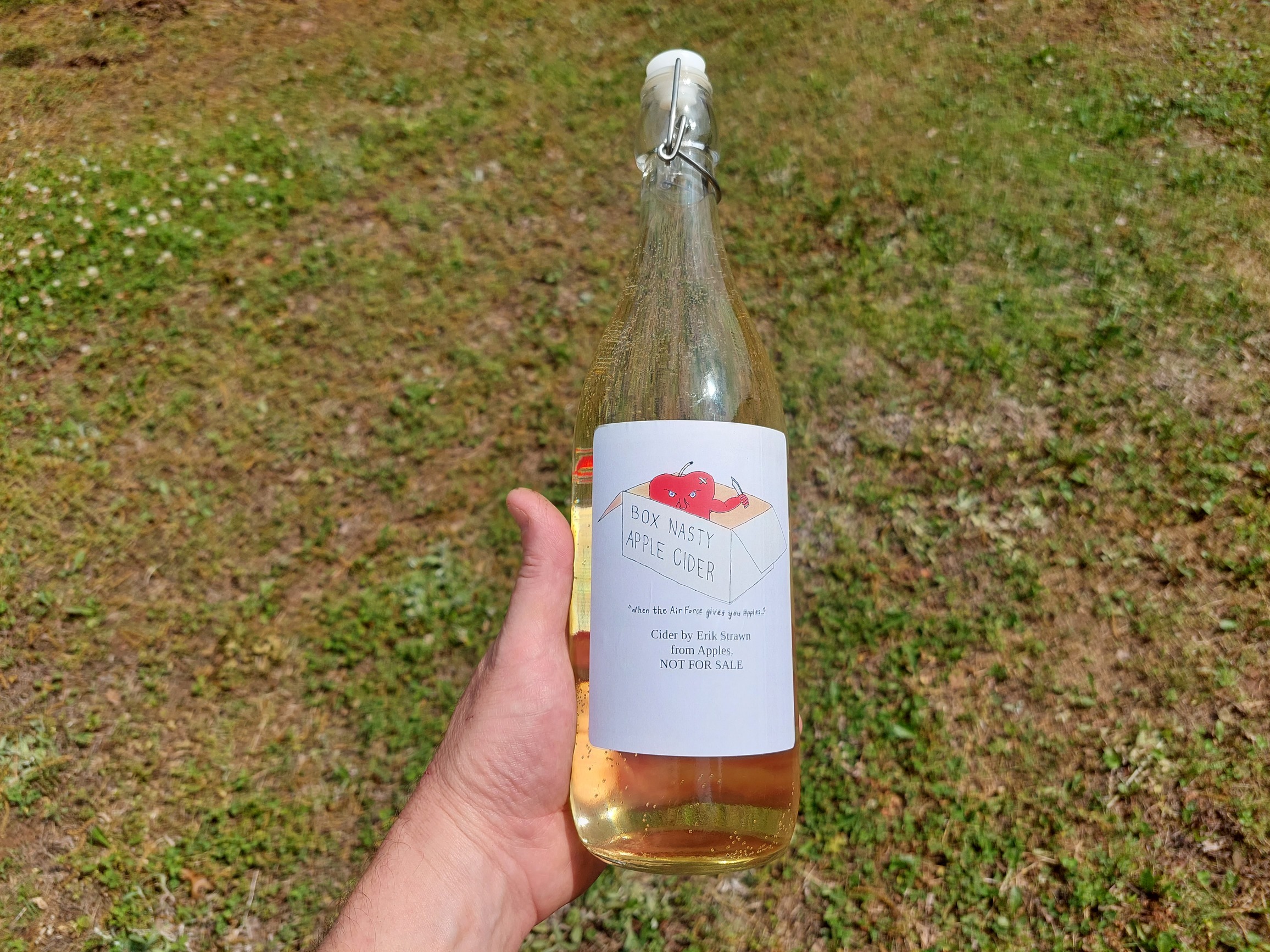Has anyone got an objective method for measuring the clarity of wine as it's clearing?
There will always be a strong element of subjective judgement I suppose, but I've tried to think of ways to take some of the subjectivity out of it.
One method I've come up with is to shine my LED bike light through one side of the demijon and look at it through the other side. When the wine is still cloudy/hazy, I just see a glow of diffuse light through wine to the other side. As the wine gets clearer, I can see the 5 indivudal LEDs of the light (see attached pic) and there is less of a diffuse glow as the light goes more directly through the wine with less scattering. That's not foolproof though because it also depends on the ambient light level when I do this - if it's dark or night time in the place where I do this (garage) its easier to see the 5 LEDs than in the daytime.
I've also wondered if a laser pointer could replace the LED light - shine the laser pointer beam through the demijon onto a white card to see if you can see a dot, but I don't have a laser pointer to try it for myself. Has anyone else tried that?
I've heared of the newspaper test - where if you can read newsprint through the wine then its certainly clear enough. I thought about using an eyetest chart with progressively smaller text or letters. What's the smallest text you can see through the wine - and use that as an objective measure of how clear the wine is.
Just thought I'd post this to share ideas and start a discussion.
There will always be a strong element of subjective judgement I suppose, but I've tried to think of ways to take some of the subjectivity out of it.
One method I've come up with is to shine my LED bike light through one side of the demijon and look at it through the other side. When the wine is still cloudy/hazy, I just see a glow of diffuse light through wine to the other side. As the wine gets clearer, I can see the 5 indivudal LEDs of the light (see attached pic) and there is less of a diffuse glow as the light goes more directly through the wine with less scattering. That's not foolproof though because it also depends on the ambient light level when I do this - if it's dark or night time in the place where I do this (garage) its easier to see the 5 LEDs than in the daytime.
I've also wondered if a laser pointer could replace the LED light - shine the laser pointer beam through the demijon onto a white card to see if you can see a dot, but I don't have a laser pointer to try it for myself. Has anyone else tried that?
I've heared of the newspaper test - where if you can read newsprint through the wine then its certainly clear enough. I thought about using an eyetest chart with progressively smaller text or letters. What's the smallest text you can see through the wine - and use that as an objective measure of how clear the wine is.
Just thought I'd post this to share ideas and start a discussion.




